Contrasts and Comparisons...
We are no longer building saddle trees, but we have two videos about how Western saddles fit horses available on our westernsaddlefit.com website.
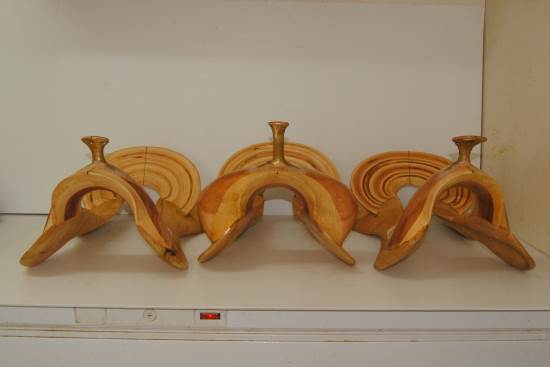
Rod finished rawhiding this set of trees today, and I had fun comparing a few things between them before he got at them. These pictures will show some of the optical illusions that makes dealing with trees, saddles and horses so challenging at times.
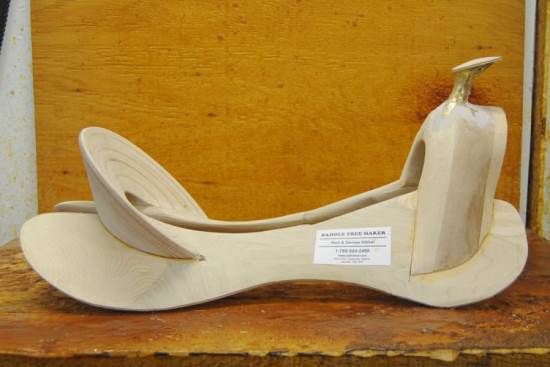
I sent a few pictures of this tree to the customer prior to it being rawhided. His comment was about the height of the fork. He was concerned about leaning forward going uphill and getting the horn in his belly. It is definitely a taller fork at 8 ½” gullet height, but it is not as high as it looks...
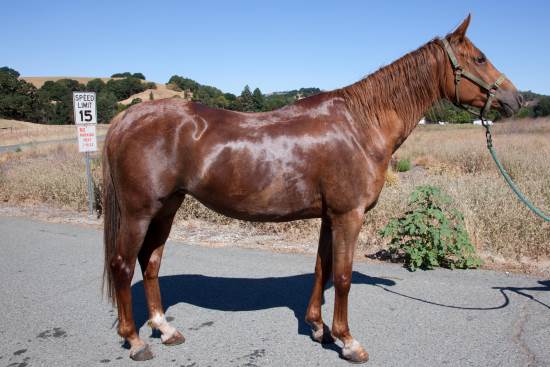
There are a couple reasons we made it that tall. One is because he rides horses with a fair amount more wither than the “average” or “common” – if there is such a thing - and we want to make sure to clear them.
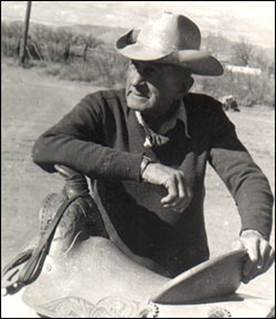
The other reason is because he likes the look of this old saddle, which Ed Connell worked with the Carroll Saddle Company to design, and we are trying to capture that look.
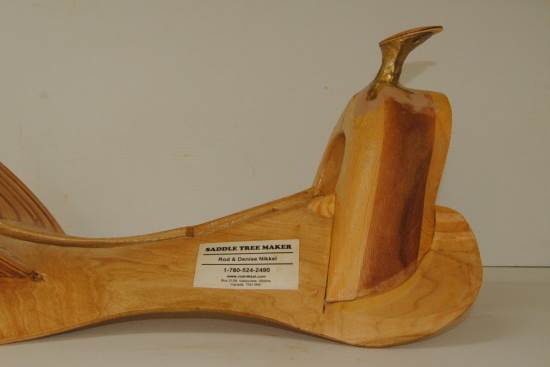
So – it looks tall because it is taller than our most common gullet height for a metal horn fork, but only by ½”. That shouldn’t account for it looking SO TALL. What else contributes?
Well, it only has 3 ½” stock thickness, so it is narrower front to back than most of the metal horn forks we build. That makes it look taller than it would with a thicker stock. (Again, the stock thickness comes from the Ed Connell saddle.) But it only has a 2 ½” high horn, which is also leaned ahead, so total height really isn’t too bad and getting stuck in the gut with the horn isn’t all that likely.
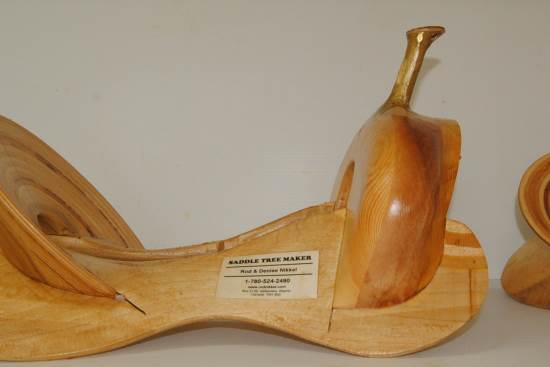
Compare it to this one, a barrel saddle tree with an 8” high gullet (1/2” lower) but a 3 ½” high horn with a 1 ¾” cap. To get the horn that tall with that small a cap, we had to use what is called a 4” horn. (We talk a bit about horn height and cap size, etc. on our Basics on Horns page.) This tree only has a 3 ½” stock thickness too, and the horn is leaned as well. The rider should be able to hang onto it pretty well when rounding the barrels, which is the purpose of the horn in this case.
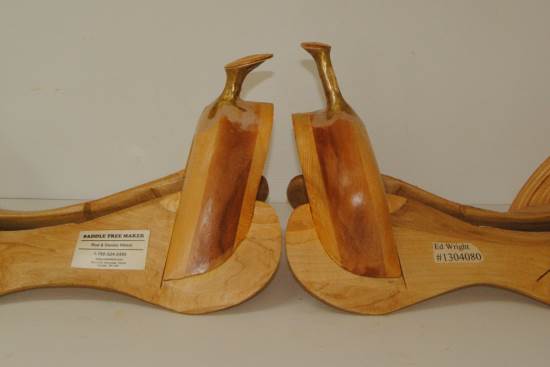
So when you stick them front to front, all of a sudden, that slick fork doesn’t really look too tall after all…
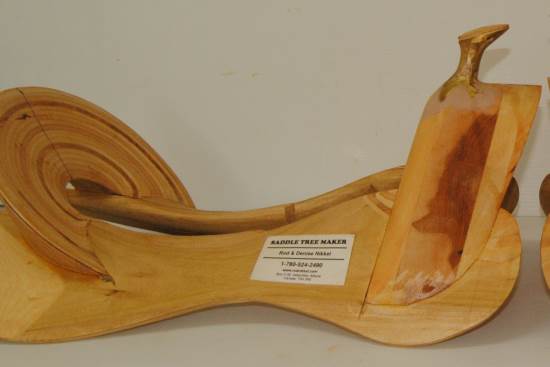
Now lets look at the other slick fork Rod built last week. This one has 4 ¼” stock – ¾” more than either of the other two. And it has an 8 ¼” gullet height – smack dab in between the other two.
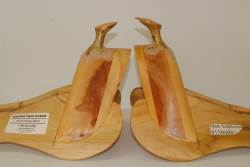 |
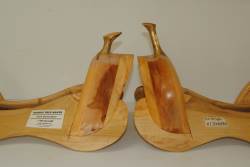 |
See? I told you it was in between the other two!
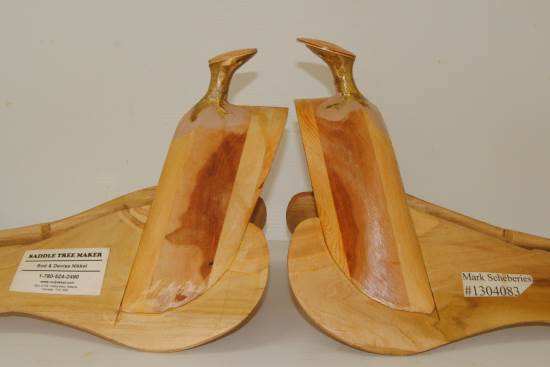
But even though it is only ¼” shorter than the first tree, it looks a LOT shorter. Why? Well, the horn cap is smaller (2 ¼” cap compared to 2 ¾”), even though both are 2 1/2" high horns, so that makes a small amount of difference. But really, the difference in look is the stock thickness. Add an additional ¾” front to back, and all of a sudden it changes how tall it appears to be. Interesting…
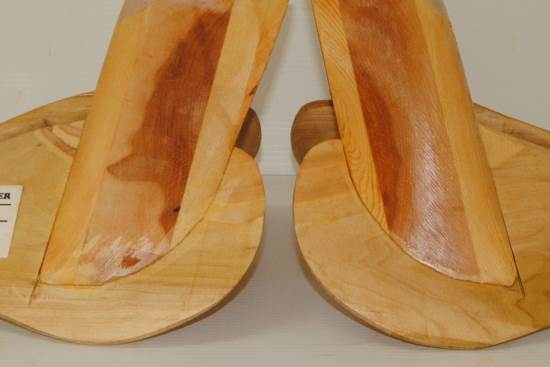
Another thing to notice is the difference in the bars. See how much more bar is ahead of the fork on the right compared to the one of the left? It obviously has a longer bar tip – right? Wrong… Identical bar outline shapes (both are regular). The difference, again, is the stock thickness. Thicker stock, more footprint of the fork on the bar, makes it look like a shorter bar tip. Optical illusion again…
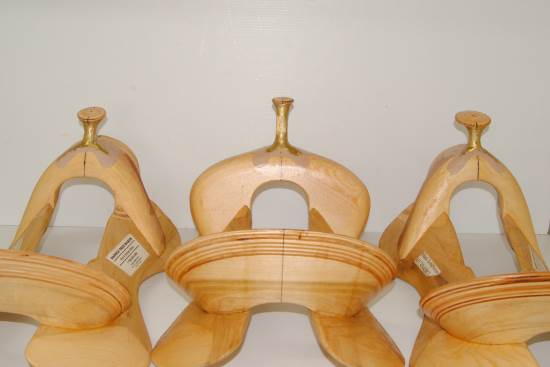
But this is the neatest comparison shot. All these trees are set at 90 degrees (remembering, of course, that angle is something we draw on the fork and is nothing that can be measured in a finished tree).
From left to right:
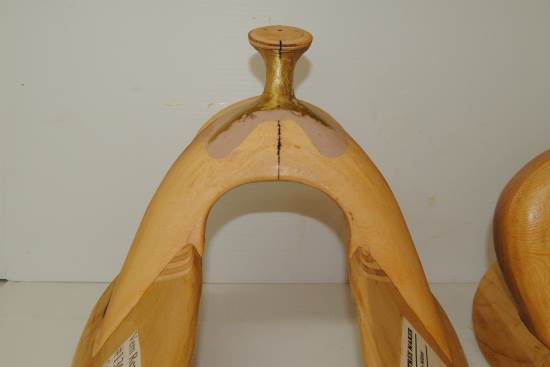
4 ¼” wide hand hole. 6 3/8” hand hole height
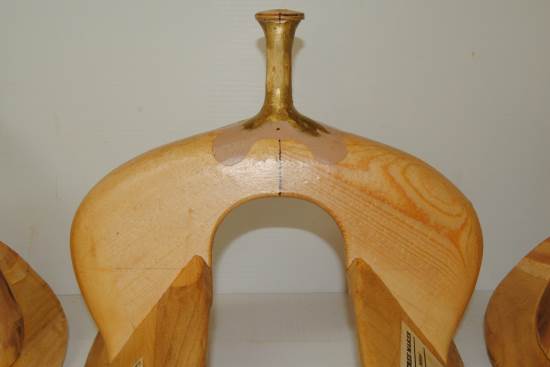
4” wide hand hole. Same hand hole height at 6 3/8" - honest. Amazing the difference ¼” in width can make in the look of that hand hole area. You’d swear it was lower...
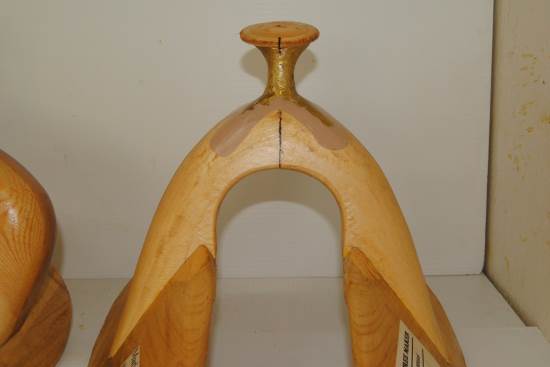
3 ¾” wide hand hole. 6 7/8” hand hole height – a full ½” taller. But there is the same difference in hand hole width between the first two as there is between the last two – but you don’t notice it nearly as much because that difference in height sure masks it. All that optical illusion stuff again…
But wait a minute. You said the gullet heights were 8”, 8 ¼” and 8 ½”, but the hand hole heights were 6 3/8”, 6 3/8” and 6 7/8”. How is that possible?
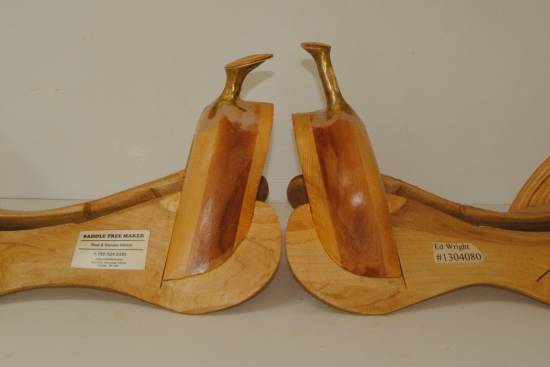
Well, the barrel saddle and Connell-look saddle correlate – 8” gullet height with a 6 3/8” hand hole height compared to 8 ½” gullet height with a 6 7/8” hand hole height.
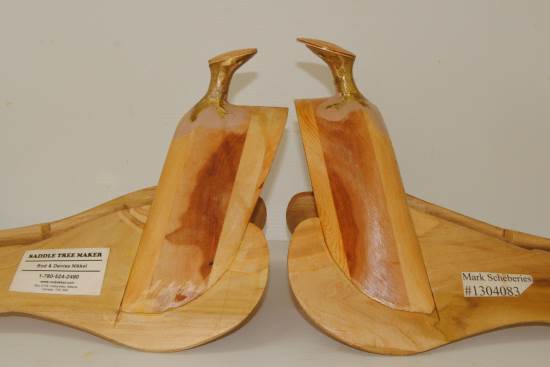
And the other one? It has 4 ¼” of stock compared to 3 ½” of stock, and it has a higher top cut angle. In other words, it has more pitch to the top of the gullet than the ones with only 3 ½” stock. “But they look the same!!” Yeah, I know. It’s that optical illusion thing again… But it really is tipped up more – so the back is comparatively lower. (See our Avoiding the Withers page for more explanation.) In this case, it is a good thing that the tree that has to clear those withers that go back forever has thinner stock. Otherwise, we would have had to make the fork even taller.
So there you go. Trees that look the same when they really are different, and that look different when they really are the same. It is amazing how much optical illusion there really is when you look at something, yet know how it is really made.
Now, if I had only thought to put them on a horse to compare them that way too…
